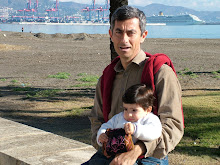Figure 1. A board with the checkers in their initial position.
The points are numbered for either player starting in that player's home board. The outermost point is the twenty-four point, which is also the opponent's one point. Each player has fifteen checkers of his own color. The initial arrangement of checkers is: two on each player's twenty-four point, five on each player's thirteen point, three on each player's eight point, and five on each player's six point.
each player's six point.
Both players have their own pair of dice and a dice cup used for shaking. A doubling cube, with the numerals 2, 4, 8, 16, 32, and 64 on its faces, is used to keep track of the current stake of the game.

The object of the game is move all your checkers into your own home board and then bear them off. The first player to bear off all of their checkers wins the game.
- MOVEMENT OF THE CHECKERS -
To start the game, each player throws a single die. This determines both the player to go first and the numbers to be played. If equal numbers come up, then both players roll again until they roll different numbers. The player throwing the higher number now moves his checkers according to the numbers showing on both dice. After the first roll, the players throw two dice and alternate turns.
The roll of the dice indicates how many points, or pips, the player is to move his checkers. The checkers are always moved forward, to a lower-numbered point. The following rules apply:
- A checker may be moved only to an open point, one that is not occupied by two or more opposing checkers.
- The numbers on the two dice constitute separate moves. For example, if a player rolls 5 and 3, he may move one checker five spaces to an open point and another checker three spaces to an open point, or he may move the one checker a total of eight spaces to an open point, but only if the intermediate point (either three or five spaces from the starting point) is also open.

Figure 3. Two ways that White can play a roll of


- A player who rolls doubles plays the numbers shown on the dice twice. A roll of 6 and 6 means that the player has four sixes to use, and he may move any combination of checkers he feels appropriate to complete this requirement.
- A player must use both numbers of a roll if this is legally possible (or all four numbers of a double). When only one number can be played, the player must play that number. Or if either number can be played but not both, the player must play the larger one. When neither number can be used, the player loses his turn. In the case of doubles, when all four numbers cannot be played, the player must play as many numbers as he can.
- HITTING AND ENTERING -
A point occupied by a single checker of either color is called a blot. If an opposing checker lands on a blot, the blot is hit and placed on the bar.
Any time a player has one or more checkers on the bar, his first obligation is to enter those checker(s) into the opposing home board. A checker is entered by moving it to an open point corresponding to one of the numbers on the rolled dice.
For example, if a player rolls 4 and 6, he may enter a checker onto either the opponent's four point or six point, so long as the prospective point is not occupied by two or more of the opponent's checkers.


 with a checker on the bar, he must enter the checker onto Red's four point since Red's six point is not open.
with a checker on the bar, he must enter the checker onto Red's four point since Red's six point is not open. If neither of the points is open, the player loses his turn. If a player is able to enter some but not all of his checkers, he must enter as many as he can and then forfeit the remainder of his turn.
After the last of a player's checkers has been entered, any unused numbers on the dice must be played, by moving either the checker that was entered or a different checker.
- BEARING OFF -
Once a player has moved all of his fifteen checkers into his home board, he may commence bearing off. A player bears off a checker by rolling a number that corresponds to the point on which the checker resides, and then removing that checker from the board. Thus, rolling a 6 permits the player to remove a checker from the six point.
If there is no checker on the point indicated by the roll, the player must make a legal move using a checker on a higher-numbered point. If there are no checkers on higher-numbered points, the player is permitted (and required) to remove a checker from the highest point on which one of his checkers resides. A player is under no obligation to bear off if he can make an otherwise legal move.
Play backgammon against computer!!!
If you've got a board, but you need a couple of dice, please, click here








